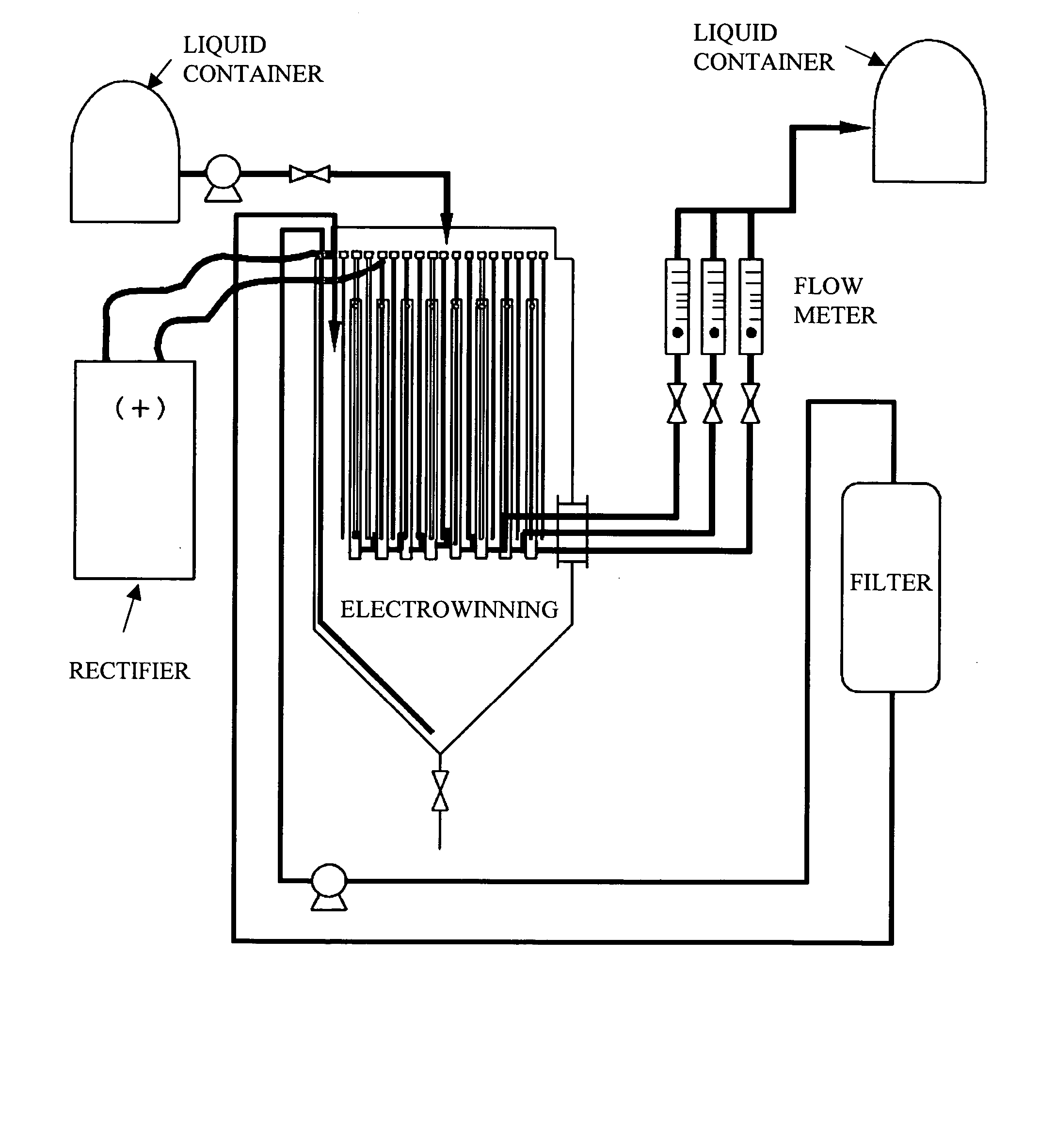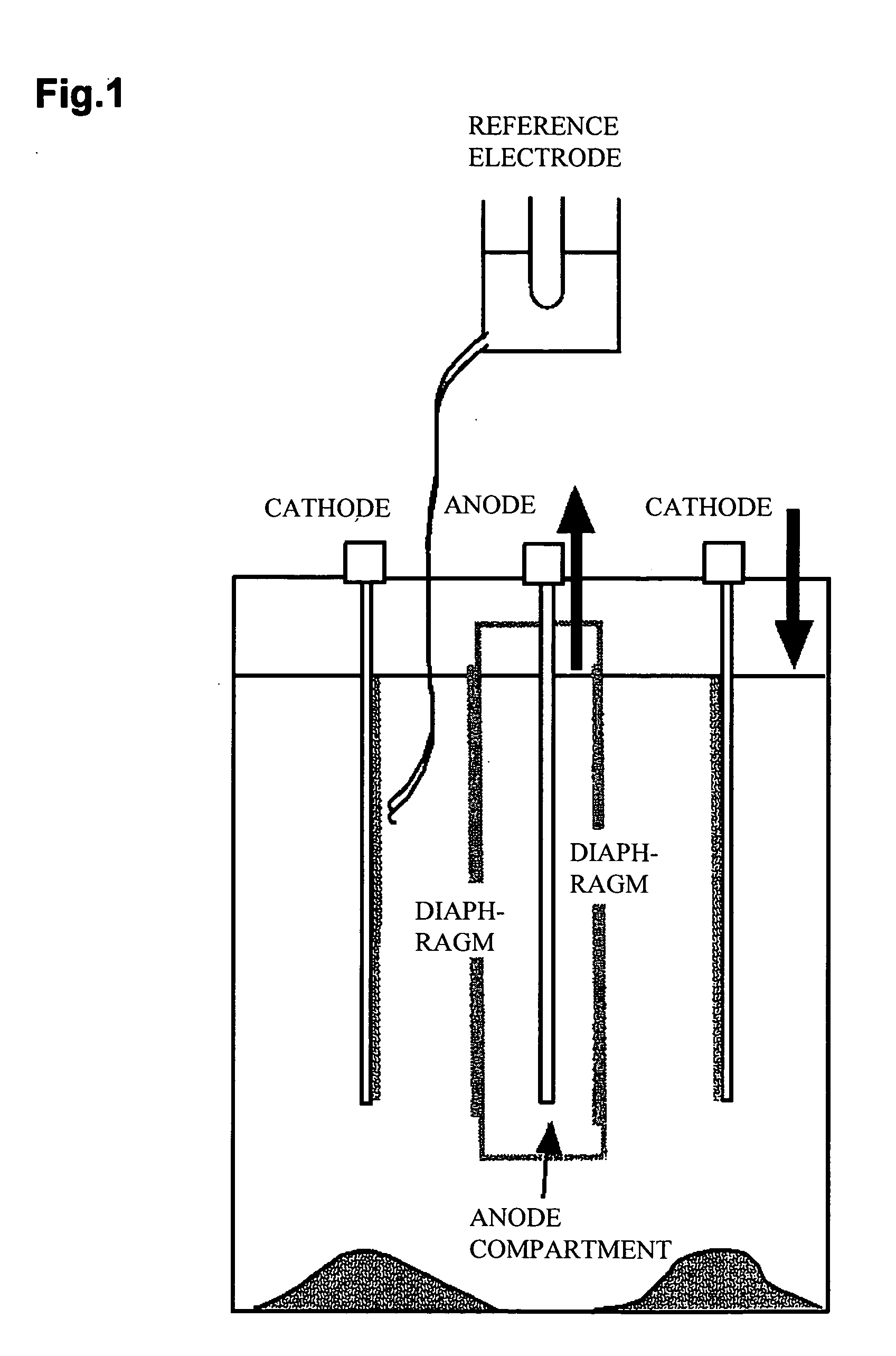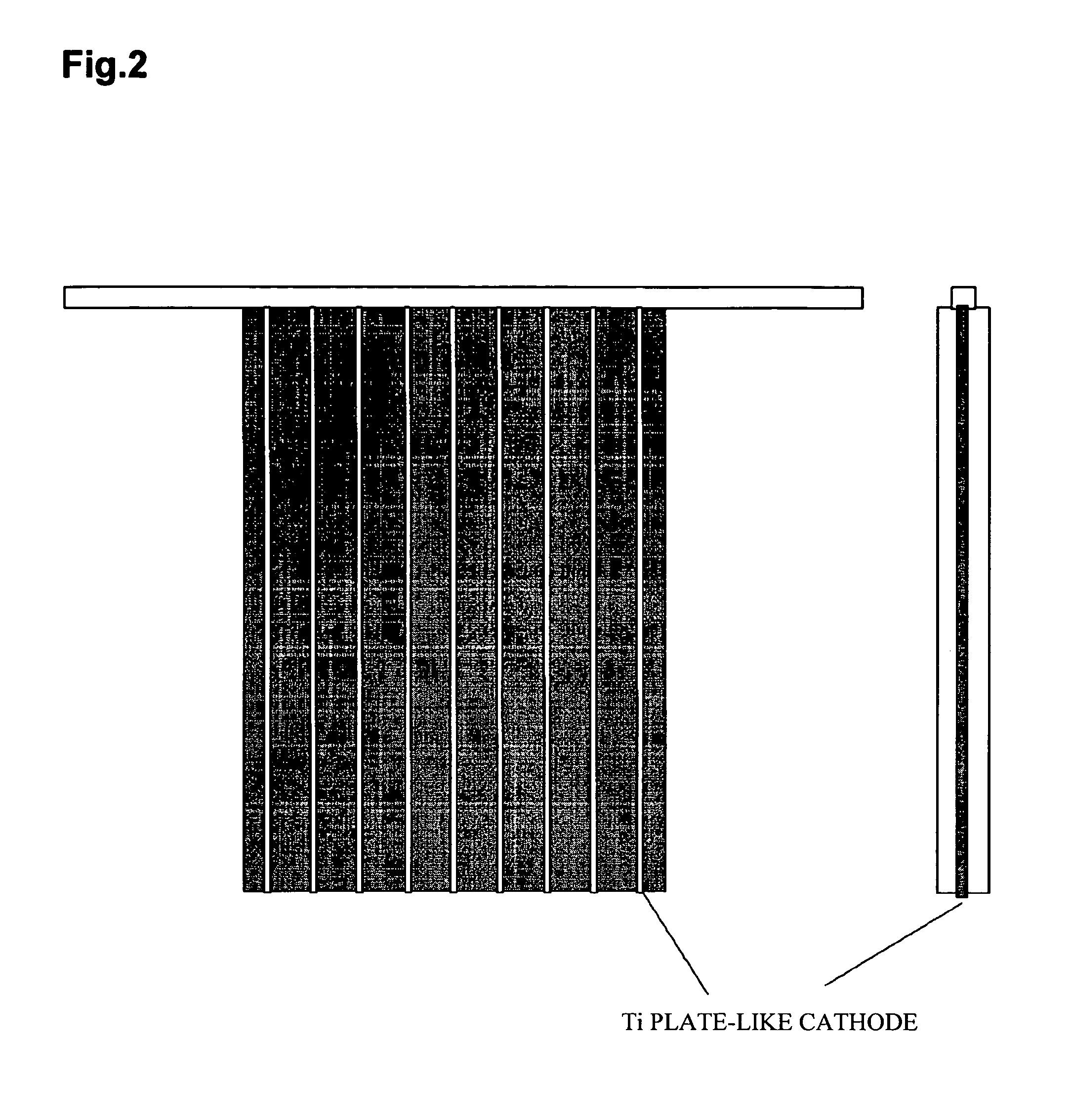High purity electrolytic copper and its production method
a technology of electrolytic copper and production method, which is applied in the direction of electrolysis components, instruments, optics, etc., can solve the problems of large obstacles, inability to obtain electrolytic copper that has high enough quality to be put on the market, and inability to obtain electrolytic copper in plate-like form. achieve the effect of high quality
- Summary
- Abstract
- Description
- Claims
- Application Information
AI Technical Summary
Benefits of technology
Problems solved by technology
Method used
Image
Examples
example 1
[0043] An electrolytic cell shown in FIG. 1 was employed, and a cathode of 140 mm×100 mm in external size, shown in FIG. 2, was used. The cathode was prepared by welding nine Ti plates of 140×12×0.5 mm to a copper crossbar, and sandwiching each Ti plate with polyvinyl chloride (PVC) plates of 140×10×3 mm. The Ti plates are then bonded and fixed.
[0044] A chalcopyrite leach liquor (Cl: 5.5 M, Cu: 30 g / L, Zn: 20 g / L, Pb: 3 g / L, Fe: 1 g / L, As: 20 mg / L, Sb: 1 mg / L, Bi: 3 mg / L, Ni: 10 mg / L, Ca: 0.1 g / L) was produced as a sample liquor of the electrolyte for the inside of the electrolytic cell, and a compound liquor of 75 g / L in Cu concentration was supplied as a feed liquor for the electrolytic cell.
[0045] The liquor was maintained at approximately 60 degrees C., and electrowinning was performed with a current density of 500 A / M2. The cathode potential was −80 to −150 mV / SHE.
[0046] Scraping-off was carried out every three minutes, and copper particles were collected through a total rem...
example 2
[0049] The same electrolytic cell and the same electrolyte as those of Example 1 were employed, and the cathode shown in FIG. 3 was used. This cathode was prepared by forming holes of approximately 0.5 mm in diameter at 5 mm intervals in a PVC mother board. Ti wires of 0.5 mm in diameter were put through the respective holes, and were fixed so as to protrude from the surface of the mother board by approximately 5 mm. The Ti wires were gathered in the electrode and were connected to a conductive wire at the top.
[0050] The cathode potential was −100 to −150 mV / SHE.
[0051] The other conditions were the same as those of Example 1, and scraping-off was performed with a polypropylene brush every five minutes. The results are shown as Examples 2-1 and 2-2 in Table 1.
[0052] In Examples 2-1 and 2-2, the amounts of Cl were 9 mass ppm and 8 mass ppm, the amounts of Na were 4 mass ppm and 4 mass ppm, and the amounts of S were 5 mass ppm and 7 mass ppm, each of which was quite small. The amoun...
PUM
| Property | Measurement | Unit |
|---|---|---|
| particle size | aaaaa | aaaaa |
| width | aaaaa | aaaaa |
| current density | aaaaa | aaaaa |
Abstract
Description
Claims
Application Information
 Login to View More
Login to View More - R&D
- Intellectual Property
- Life Sciences
- Materials
- Tech Scout
- Unparalleled Data Quality
- Higher Quality Content
- 60% Fewer Hallucinations
Browse by: Latest US Patents, China's latest patents, Technical Efficacy Thesaurus, Application Domain, Technology Topic, Popular Technical Reports.
© 2025 PatSnap. All rights reserved.Legal|Privacy policy|Modern Slavery Act Transparency Statement|Sitemap|About US| Contact US: help@patsnap.com



